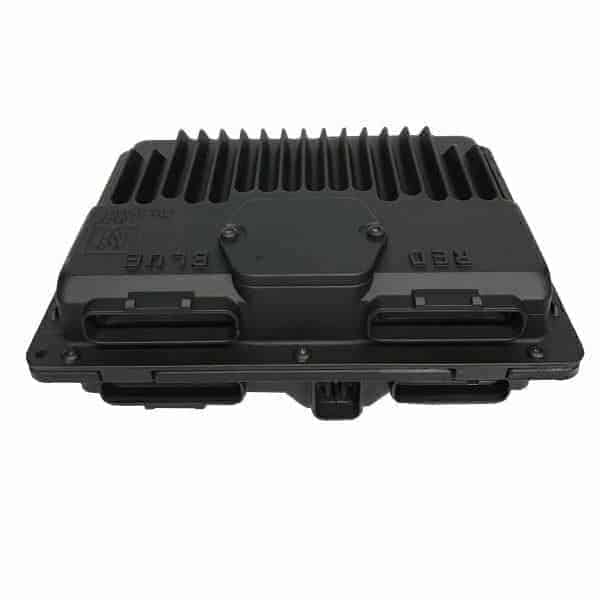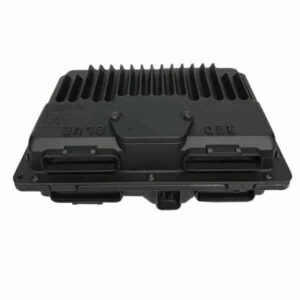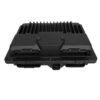Restore Your Truck’s Brain and Get Back on the Road
Is your Chevrolet S10, GMC Sonoma, or another trusty GM truck from the late ’90s giving you headaches? If you’re dealing with a persistent Check Engine Light, erratic engine behavior, or transmission shifting problems, the culprit is often a failing Powertrain Control Module (PCM). As the central computer for your engine and transmission, its health is critical. This isn’t just about passing an emissions test; it’s about the reliability and performance you depend on. This replacement PCM is a tested, reliable solution that gets your vehicle’s essential systems communicating correctly again.
We take the guesswork and hassle out of the replacement process. Unlike pulling a random module from a junkyard, this unit is professionally programmed to your vehicle’s specific Vehicle Identification Number (VIN) before it ships. This ensures all factory settings and the latest GM software updates are loaded, making for a much smoother installation process and restoring original performance. A faulty computer can cause a cascade of confusing issues, but a correctly programmed 1998 S10 Sonoma PCM provides the stable foundation your truck needs to run properly.
From the Diagnostic Bay: The Case of the Confusing Codes
I remember a 1998 GMC Jimmy with the 4.3L V6 that came into my shop. The owner was frustrated with an intermittent no-start condition and a Check Engine Light that threw a mix of seemingly unrelated sensor codes. We checked the wiring and tested the sensors, which all checked out fine. The tell-tale sign was the P0601 ‘Internal Control Module Memory Check Sum Error’ that would pop up occasionally. This code is a direct indictment of the PCM itself. After installing a VIN-programmed module like this one, all the phantom codes vanished and the Jimmy started reliably every time. It’s a classic example of how a failing PCM can send you chasing ghosts, when the real problem lies with the computer itself.
Is Your GM Truck Showing These Signs?
A failing PCM can manifest in numerous ways. If you’re experiencing any of the following, it might be time for a replacement:
- ✔ Persistent Check Engine Light (CEL)
- ✔ Diagnostic Trouble Codes (DTCs) related to internal module failure, such as P0601, P0604, or P0606
- ✔ Unexplained drop in fuel economy
- ✔ Engine stalling, stumbling, or misfiring
- ✔ Harsh or erratic automatic transmission shifting
- ✔ Complete no-start condition where the engine cranks but won’t fire
- ✔ Failure to communicate with a diagnostic scan tool
Your Straightforward Installation Guide
Installing your pre-programmed 1998 S10 Sonoma PCM is a job most DIYers can handle with basic tools. While locations vary slightly, the process is generally consistent.
- Safety First: Always disconnect the negative terminal from your vehicle’s battery before starting any electrical work.
- Locate the PCM: On most S10/Sonoma/Blazer models, the PCM is located in the engine bay, often on the passenger-side fender well or near the battery. On Express/Savana vans, it’s typically in the rear of the engine compartment.
- Disconnect the Connectors: Carefully unclip the wiring harness connectors from the old PCM. These connectors have locking tabs that need to be released. Avoid pulling on the wires themselves.
- Remove the Old Module: Unbolt the old PCM from its mounting bracket. It’s usually held in by a few small bolts.
- Install the New Module: Mount your new, VIN-programmed PCM onto the bracket and securely fasten it.
- Reconnect Everything: Plug the wiring harnesses firmly into the new module until they click into place. Reconnect the negative battery terminal.
- Final Step: In some cases, a security relearn procedure may be necessary. This can often be done without special tools by cycling the key. Consult a service manual for your specific vehicle’s procedure if it doesn’t start immediately.
Verified Compatibility for Your Vehicle
This module is a direct replacement for service number 9366810 and is compatible with numerous other part numbers, including 09355699 and 16266645. It fits a wide range of 1998-1999 GM trucks and vans. Please verify your vehicle is on the list below and that the ID on your original module matches.
CHEVROLET 2500 PICKUP 98-99 (Gasoline, ID 9355699)
CHEVROLET 3500 PICKUP 98-99 (Gasoline, ID 9355699)
GMC 1500 PICKUP 98-99 (Gasoline, ID 9355699)
GMC 2500 PICKUP 98-99 (Gasoline, ID 9355699)
GMC 3500 PICKUP 98-99 (Gasoline, ID 9355699)
S10/S15/SONOMA 98 (4.3L, w/o build date opt ZN4, ID 9355699)
BLAZER S10/JIMMY S15 98 (w/o build date opt ZN4, ID 9355699)
BRAVADA 98 (4.3L, w/o build date opt ZN4, ID 9355699)
ENVOY 98 (w/o build date opt ZN4, ID 9355699)
ISUZU HOMBRE 98 (4.3L, w/o extended build date opt ZN4, ID 9355699)
ASTRO 98 (ID 9355699)
SAFARI (GMC) 98 (ID 9355699)
EXPRESS/SAVANA VAN 1500/2500/3500 98-99 (Gasoline, ID 9355699)
SUBURBAN 1500/2500 98-99 (Gasoline, ID 9355699)
TAHOE/YUKON 98-99 (Gasoline, ID 9355699)
ESCALADE 99 (ID 9355699)
Frequently Asked Questions
What do you mean by ‘programmed to my VIN’?
Before we ship the PCM, our technicians load it with the specific software and calibrations for your exact vehicle using the VIN you provide. This ensures compatibility with your engine, transmission, and options, eliminating the need for an expensive trip to the dealership for programming.
Is this a new part?
No, this is a high-quality, tested used part sourced from a salvaged vehicle. Each unit is inspected and verified to be fully functional before being programmed and shipped.
What do I need to do after I place my order?
After you complete your purchase, you must send us your 17-digit Vehicle Identification Number (VIN). We cannot program and ship your module without it. You can typically add this as a note during checkout or send it to us in a message referencing your order number.
Will I need to do anything else after installation?
In most cases, it is a direct installation. However, some GM vehicles require a security relearn procedure (often called Passlock or Passkey) to allow the vehicle to start. This procedure syncs the new PCM with your vehicle’s anti-theft system and can usually be done without special tools.
How do I find my vehicle’s VIN?
Your VIN can be found on a metal tag on the driver’s side of the dashboard (visible through the windshield), on the driver’s side door jamb sticker, or on your vehicle’s registration and insurance documents.



